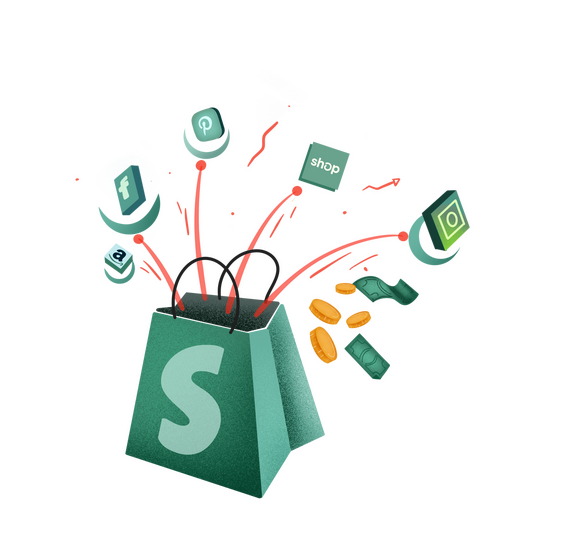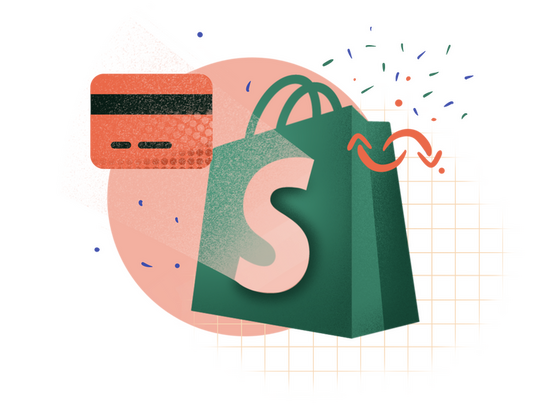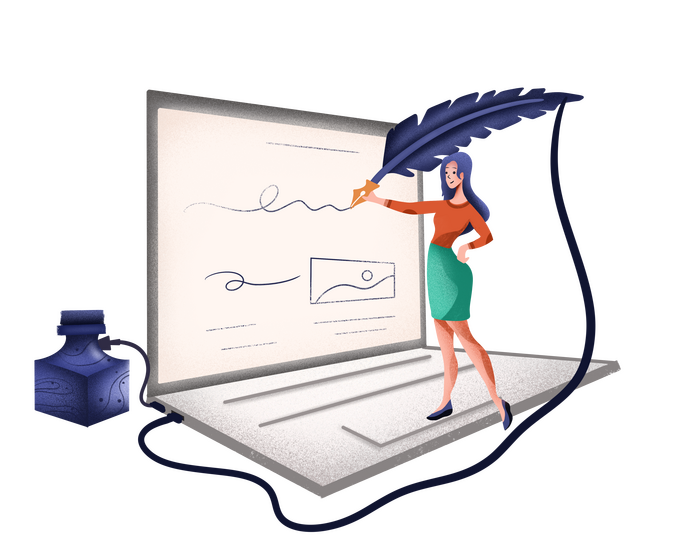You’ve got a kickass product, a beautiful and intuitive Shopify store, a vibey Instagram feed, and a rock-solid email marketing program. You’re doing all the “right” things, but you’re still spotting cobwebs in the corners of your shop.
You’ve built it – so why haven’t they come?
If you’re ticking all the quintessential boxes for eCommerce success and still aren’t seeing the traffic you know your store deserves, you may want to consider diversifying the channels through which you’re selling those killer products. We say this all the time: if you want people to buy from you, you need to make the buying easier than picking up their to-go Starbucks order.
The first step? Go where the customers are.
Let’s say you’ve got a healthy, engaged following on Instagram. You post a high quality, on-brand image announcing the launch of your new high speed blender. You’re a savvy merchant who’s done your demographic and media trend research, so the image pleases the algorithm (wow, much congrats), catches the eyeballs, and nets the Likes. Still…sales are slow.
The thing is, in order to buy said blender, the customer must tap into your profile, click your link in bio, then potentially navigate through various pages on your mobile site to even find – let alone purchase – it.
WHAT IF, since you know your audience congregates on Instagram, you required two clicks to purchase instead of several? Barrier to entry…disengaged!
How do? By using Instagram itself as a sales channel.
Instagram is just one channel you can add to your Shopify store, and fewer clicks to buy is just one benefit of picking up multiple sales channels. Ahead, we’ll give you the 411 on some of the best sales channels available to you, their perks, and how to implement them.
Avoiding Fragmentation with Multiple Sales Channels on Shopify
Before we go any further, we know what you’re thinking: Managing my orders and inventory in Shopify is quite enough for me, thank you. I do not need to go chasing them all around the goddess-forsaken internet.
Totally understandable; and Shopify’s got your back. When you sell through Shopify-approved sales channels, you’ll connect them directly to your store via apps, meaning all those orders will run through the same inventory management system and you’ll be able to view and fulfill them right from your Shopify Admin. Yee!
What’s more, Shopify provides unique dashboards for all of your sales channels, meaning you can consistently monitor analytics at the channel level to see which ones are most profitable.
Even if you’re using a sales channel that isn’t technically app-based, Shopify does a bang-up job making sure your Admin is always your homebase for customer and order information.
Shopify Sales Channel Options
Now…the moment you’ve been waiting for! From massive marketplaces like Amazon to more niche ones like Pinterest, there’s an extra sales channel for every Shopify merchant. Here are a few of the greatest hits.
Facebook & Instagram
Cost: Free + optional ad spend
Facebook Meta and Instagram make it easy as pie to sell through either platform. Once you add the Facebook channel to your Shopify store, set up Facebook Shop and/or Instagram Shopping, and publish products to the Facebook channel, edits to those products within Shopify will automatically sync to whichever shop(s) you’ve set up within about 15 minutes.
Buyers can shop from your store without ever leaving the app. All the data and order information flows directly into your Shopify Admin as if they’d shopped from your actual store.
Just FYI, all of your product details will remain the same across platforms. You aren’t able to have one product description, for example, in Shopify and another in your Instagram Shop.
Buy Button
Cost: Free
If you host your eCommerce store on Shopify but, say, your blog on another site (we do that!), the Buy Button app allows you to embed anything from a simple button to the equivalent of a full product page right into a blog post (or any other type of page) – all with a little auto-generated snippet of HTML.
Buy Button supports individual products and collections, a quick checkout option (so the user doesn’t even have to enter your store to make a purchase), and is highly customizable so you can tailor it perfectly to your brand.
And here’s the kicker: it’s totally freeeeee.
Sound like a match? Check out this article from Shopify and get to…button-ing!
Shop
Cost: Free
Writer’s Note: As a consumer, I f*cking love the Shop app, primarily for how easy Shop Pay makes my checkout experience. (And I ain’t the only one. 😘)
Shop is a mobile app in which customers are presented not only with every order they’ve ever purchased using Shop Pay (more on that in a second), but also a highly personalized feed of shopping recommendations and offers based on their purchase history and brands they’ve marked as “Favorites”.
Key benefits of integrating the Shop channel with your Shopify store include:
- Accelerated checkout through Shop Pay
- Beautiful and easy-to-understand order tracking
- A “mobile storefront” for your shop (Customize your profile and products at any time!)
- Ability to encourage rediscovery through product recommendations
- Targeted post-purchase offers
- Comprehensive analytics on audience, checkouts, marketing, and more
If you get the Shop channel for anything, get it for Shop Pay. If you don’t know why you would do that, maybe read this article. 😇
Point of Sale
Cost: Free plan available, Pro is $89/mo
If you’re an eCommerce merchant with any kind of physical presence, Point of Sale will be your right-hand channel. POS Lite (the basic plan) is recommended for merchants who are primarily eCommerce but dip their toes in fairs, pop-ups, and maker’s markets. Lite allows you to:
- Accept a wide variety of payments, right on an iPhone or iPad
- Collect and manage customer profiles
- Manage online and in-person orders in one place
- Accept returns
- Email carts to buy online
- A ton more!
If you spring for the Pro plan – which is recommended for merchants who have their own brick-and-mortar stores – you’ll get all the goodies that come with Lite, plus much greater flexibility when it comes to number of registers/staff, payment tracking, customer-friendly features like buy online, pick up in store or buy in-store and ship to customer, and many other tantalizing options.
Cost: Free to install + optional ad spend
With the Google channel you can list your products on Google for free, complete with handy little Buy on Google buttons that make checkout a breeze for your customers.
To gain more exposure for your listings, the Google channel allows you to easily run “Smart Shopping” campaigns which are basically just Google Ads campaigns for the products you most want customers to see. Smart Shopping campaigns touch users on Google Search, YouTube, Gmail, Shopping, and the Google Display Network.
All you have to do is install the app, sync your desired products, set your daily budget, and Google will automatically optimize your campaign and distribute it in the places and at the times they will be most effective.
Cost: Free + optional ad spend
The mother of all mood board creators, Pinterest, introduced Buyable Pins in 2015 (ahem – exclusively in partnership with Shopify, by the way), turning every moment of visual inspiration into a gentle selling opportunity for merchants.
These days they’re called Rich Pins (or Product Rich Pins, specifically) and with just a few steps, the Pinterest channel will sync up-to-date product data with your Pinterest pins. Scrolling shoppers will be able to see price, quantity, and product descriptions right there in the pin, and click the “Visit Site” button to be directed straight to the product page.
Plus, Rich Pins details automatically update any time you make changes to the products in your Shopify store, so you never have to worry whether your Pinterest audience is getting the most up-to-date product deets.
To get started, check out this help article from Pinterest OR, even easier, just install the native Pinterest channel from Shopify. Voila.
Mobile App
Cost: Varies
We’ve been singing the mobile song for a while now…
More and more customers are interacting with brands on-the-go using mobile devices. In fact, as of January 2021, nearly 80% of consumers had made a purchase on a mobile device in the 6 months prior.
Mobile responsiveness for your website is nothing new -- everyone knows that your site needs to function just as flawlessly on a mobile device as on a desktop computer. (...right? yes?) That said, many brands, such as IKEA, Starbucks, and Nike, are venturing to make that experience even more slick and front-of-mind by offering mobile apps. No web browser or search needed; consumers can enter those stores with the flick of a finger and get to shopping.
(Excerpt from our post How to Turn Your Shopify Store into a Mobile App)
Creating a dedicated app for your Shopify store can help to boost conversions, provide infinite opportunities to meet customers where they’re at (helllloooo push notifications!), and enhance your marketing efforts.
Carro
Cost: Free to sign up + 5% fee for every sale
Carro is a cross-store selling platform which supports retailers looking to dropship the products of other merchants – and offer their products to other stores, too.
Creating partnerships with Carro’s robust network of vetted retailers allows you to spin their customers into your customers, for a pretty hecking low price. You just pay a 5% fee from each sale for the honor of those acquisitions; being a Carro supplier is otherwise totally free.
Amazon
Cost: Fees vary
Given that just under half of online shoppers say they “typically start” with Amazon when searching for a product online, it’s a channel worth exploring – but it’s not quite as plug-and-play as many of the apps we’ve described so far.
There are more fees, more risks (like – yikes – having your beloved marketplace blatantly copycat your products), more limitations (little to no access to your customers’ data if they buy through Amazon) and more moving parts when it comes to setting up your storefront.
There are serious pros to selling through Amazon, though, if you can do it right for your brand. We could write a whole post on the Amazon sales channel alone, so if you’re interested, you can check out this 23-minute read (😳) from Shopify.
Tik Tok
While any merchant can download the Tik Tok channel and create scintillating video ads for whatever products their heart desires, and although Tik Tok Shopping is currently technically available to merchants in the US and UK, you’ll need to request early access in order to use the Shopping feature, specifically.
See here for the complete lowdown on Tik Tok Shopping, why it could be your ticket to virality with Gen Z, and how to get in with the first wave of Tik Tok Shopping merchants.
Wholesale
Cost: Free for Shopify Plus merchants
If you’re an established brand on a Shopify Plus plan looking to get into the wholesale game, Shopify has a channel for that. With the Wholesale channel, you can set up a completely separate, password-protected storefront with customized pricing and order processing practices that links back to the inventory in your primary shop.
A couple things to keep in mind: Wholesale Shopify stores can’t integrate with external systems or third-party apps, and prices will always be listed including tax.
Here’s a comprehensive lesson plan for setting up your new wholesale store on Shopify!
A Note About Eligibility for Shopify Sales Channels
Different sales channels have varying eligibility requirements, which may mean you need to update your store’s settings in order to use them. You’ll know you’re ineligible for a sales channel if it shows as Unavailable in your Shopify Admin. Click You can’t add this channel to see what changes need to be made in order to connect with the channel.
AND, word to the wise: read those channel terms of use carefully. Some channels may have rules about what can and can’t be in your product descriptions, for example, and your success as a newly minted multi-channel merchant depends on your ability to play by everyone’s rules.
Happy selling!

















